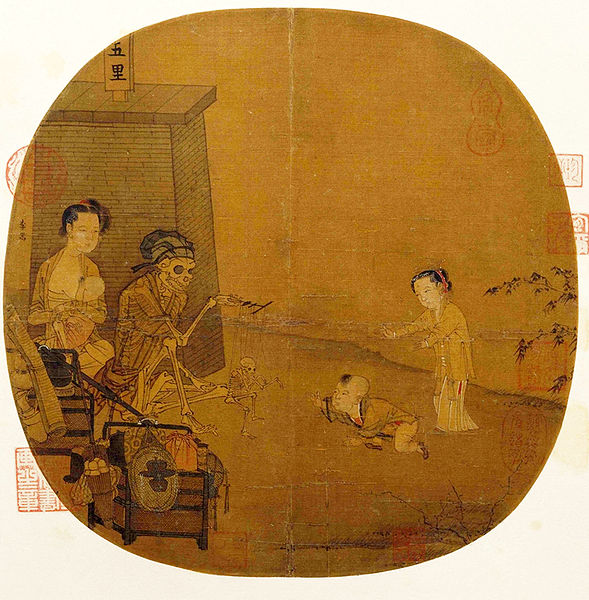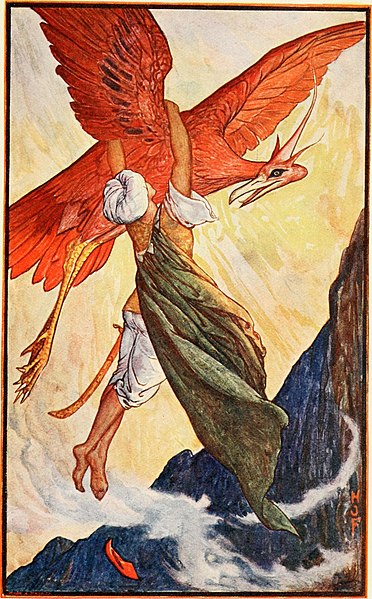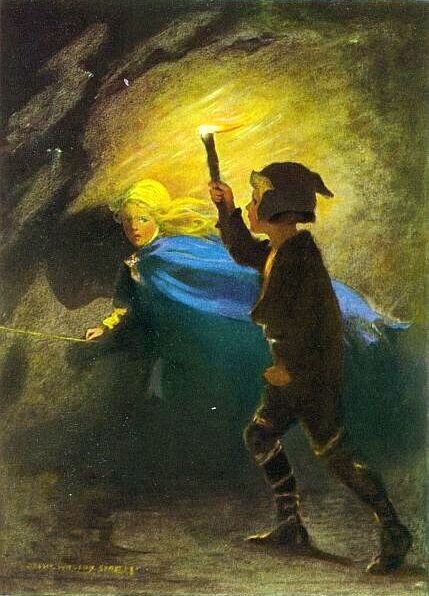Fantasy is a genre of speculative fiction involving magical elements, typically set in a fantasy world and usually inspired by mythology or folklore. The term "fantasy" can also be used to describe a "work of this genre", usually literary.
The Fairy of the Dawn in The Violet Fairy Book (1906)
Skeleton Fantasy Show (骷髏幻戲圖) by Li Song (1190–1264)
Another illustration from The Violet Fairy Book (1906)
Illustration from 1920 edition of George MacDonald's novel The Princess and the Goblin
Genre is any style or form of communication in any mode with socially agreed-upon conventions developed over time. In popular usage, it normally describes a category of literature, music, or other forms of art or entertainment, based on some set of stylistic criteria. Often, works fit into multiple genres by way of borrowing and recombining these conventions. Stand-alone texts, works, or pieces of communication may have individual styles, but genres are amalgams of these texts based on agreed-upon or socially inferred conventions. Some genres may have rigid, strictly adhered-to guidelines, while others may show great flexibility.
A genre painting (Peasant Dance, c. 1568, by Pieter Brueghel the Elder)





